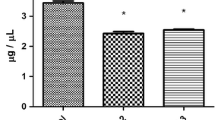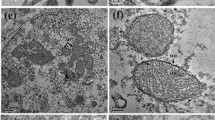Abstract
WHEN the free-living infective larva of a parasitic nematode penetrates its host, there is a fundamental change in the environment of the larva. There is, for example, a rise in the ambient temperature (from room temperature to 37° C) and changes in the relative amounts of oxygen and carbon dioxide. During infection, changes must therefore take place in the physiology of the infective larvae to enable them to survive in the new conditions. These changes are of fundamental importance in the study of parasite physiology.
Similar content being viewed by others
References
Folch, J., Ascoli, J., Lees, M., Meath, J. A., and Lebaron, F. N., J. Biol. Chem., 191, 833 (1951).
Schwabe, C. W., Amer. J. Hyg., 65, 325 (1957).
Wilson, P. G. A., Exp. Parastiol., 16, 190 (1965).
Wlodawer, P., and Baranska, J., Acta Biochim. Pol., 12, 26 (1965).
Roberts, L. S., and Fairbairn, D., J. Parasit., 51, 129 (1965).
Heilbrunn, L. V., An Outline of General Physiology, third ed., 488 (Saunders, Philadelphia and London, 1952).
Author information
Authors and Affiliations
Rights and permissions
About this article
Cite this article
BARRETT, J. Lipids of the Infective and Parasitic Stages of some Nematodes. Nature 218, 1267–1268 (1968). https://doi.org/10.1038/2181267a0
Received:
Revised:
Issue Date:
DOI: https://doi.org/10.1038/2181267a0
- Springer Nature Limited
This article is cited by
-
Metabolomics and lipidomics studies of parasitic helminths: molecular diversity and identification levels achieved by using different characterisation tools
Metabolomics (2023)
-
Changes in lipid contents of infective third-stage larvae ofNecator americanus during desiccation and revival
Zeitschrift f�r Parasitenkunde Parasitology Research (1984)
-
Biochemical composition of microfilarial and adult stages ofSetaria cervi
Zeitschrift f�r Parasitenkunde Parasitology Research (1980)
-
Wax esters in the cystacanths ofPolymorphus minutus (Acanthocephala)
Lipids (1971)





